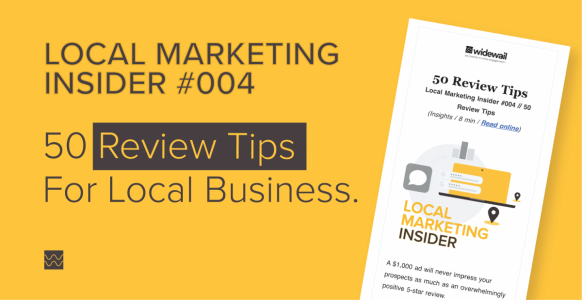- Feb 17, 2021
- 97
- 75
- Awards
- 4
- First Name
- Jake

A $1,000 ad will never impress your prospects as much as an overwhelmingly positive 5-star review.
Think differently about how to connect with customers, generate feedback, and make an impact.
Let’s get to it.
- Ask every customer for a review. Every... single... one.
- Make it easy. Ask via text/SMS.
- Stick out your neck. This is no time to be self-conscious. Negative reviews are assured. Positive reviews have to be requested.
- Consider the context. If it’s a product review, give them a week to use it. If it’s a haircut, ask them while they’re cashing out.
- Define a process. Train employees to consistently capture contact info.
- Be patient. It may take as long as 30 days for customers to leave a review. Don’t abuse your list.
- Respect repeat customers. We recommend at least 60 days between requests.
- Automate, always. Make it as easy as looking up how many reviews came in that day.
- Avoid human error. Automate to avoid burnout or distraction.
- Create convenience. Use direct links that will land customers in the right place to leave reviews, quickly.
- Customize everything. Use personalize messaging in SMS and leverage industry-specific review platforms (if relevant).
- Embrace the ancillary. Generating more reviews will also raise star ratings and reduce the percentage of negative feedback.
- Don’t overthink. There’s no such thing as an ideal number of reviews. Just focus on getting more and responding to all customers.
- Keep it current. Prospects (and Google) want to see recent review activity.
- Think short-term. Set monthly goals for getting new reviews.
- Think long-term. For new businesses - start with getting to 100 reviews. Then 1000.
- Think big picture. Regular review management should be part of an overall customer service strategy.
- Stay timely. Review frequency improves local organic search visibility. Start with 20/month.
- Control the narrative. Daily attention to customer reviews eliminates highly visible, festering negative feedback for prospects to see and use as proof to look elsewhere.
- Encourage happy voices. More happy customers exist. Otherwise, you’d be out of business. Harness their influence.
- Be an authority. Ratings and reviews translate to trustworthiness and popularity.
- Mind the store. Volume and frequency display a strong customer service focus.
- Respond to every review. No response is a response - and never a good look.
- Think about the next customer. Your reviews have two audiences, prospects and customers.
- Widen your net. Reviews are more important than proximity for local competitive SEO in 2021. (source: Moz)
- (S)eize (E)very (O)pportunity. For SEO, volume, frequency, star rating, and response are review metrics that influence ranking.
- Hand over the keys. The average local marketer spends 17% of their time managing reviews. Do the math. (source: Brightlocal)
- Shoot for the stars. World-class local businesses achieve <10% negative reviews (3-stars or less).
- Don’t get filtered out. Google will hide your listing for “best of” searches if your rating is <4.0.
- Be speedy. Turn review responses around fast. Set a goal of 24 hours.
- Spread the love. Responding to only negative reviews risks elevating their visibility on your reviews page.
- Consider it a conversation. Reviews are often a near-real-time feedback tool. Don’t leave them hanging.
- Take it offline. When responding to negative reviews, empathize - but don't accept responsibility publicly. Request further discussion over phone or email.
- Look for patterns. While one complaint shouldn’t cause an overreaction, a trend of similar feedback requires a deeper review.
- Stay composed. It’s human nature that unhappy customers are more motivated to leave reviews than happy ones. Keep personal reactions out of public view.
- Pick your battles. Take a break before responding to a review that hits below the belt, or bounce the situation off a colleague.
- Consider the consequences. Review responses are forever.
- Turn it around. Every negative review is an opportunity to show the world how seriously your business takes good customer service.
- Call in a ringer. Third-party vendors won’t take anything personally and will ensure your responses are always measured and on-brand.
- Be gracious. Your customers aren’t obliged to take the time to leave a review. When they do, especially when positive, acknowledge that effort.
- Pay it forward. Thoughtful responses to positive feedback are more likely to encourage the voice of other satisfied customers. Positive voices are influential.
- Define a brand language. If there are catchphrases or selling points you deliberately work into marketing, put them in responses, too.
- Be the brand. Mention your business name and products in review responses whenever possible. But be tasteful.
- Use names. When available, always personalize responses with the customer’s first name.
- Avoid screen names. Don’t include internet screen names or first initials in responses. If you don’t have their first name, work around it.
- Show them you’re listening. If a review includes mention of a specific experience, good or bad, mention it in the response.
- Route appropriately. If your business has multiple GMB listings by department (i.e. automotive service vs. sales), have a system to route reviews to the correct page.
- Know your platforms. Because Yelp does not allow review solicitation, the scores are usually lower. Facebook calls their reviews “recommendations”. Be aware of fundamental differences between popular hotspots.
- Gain the inside track. An active review management strategy is still not adopted by most local businesses. Be the early adopter and leader in your space.
- 2021 is a great year to get started.
If you'd like to receive these articles directly to your phone in an easy-to-read mobile version, sign up here.
If you enjoyed this issue please share it with friends or colleagues.
See you in 2 weeks - Jake, Marketing @Widewail





